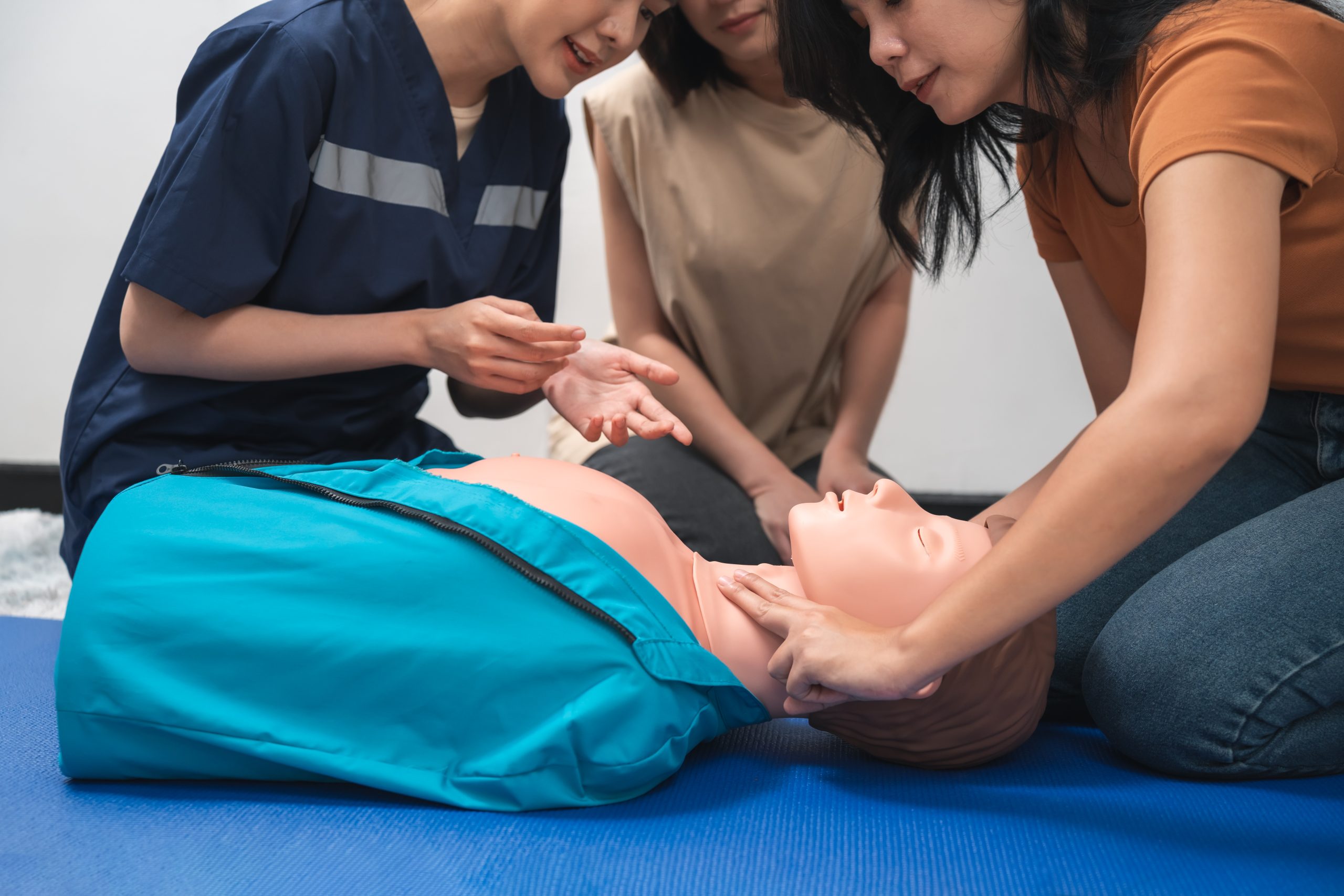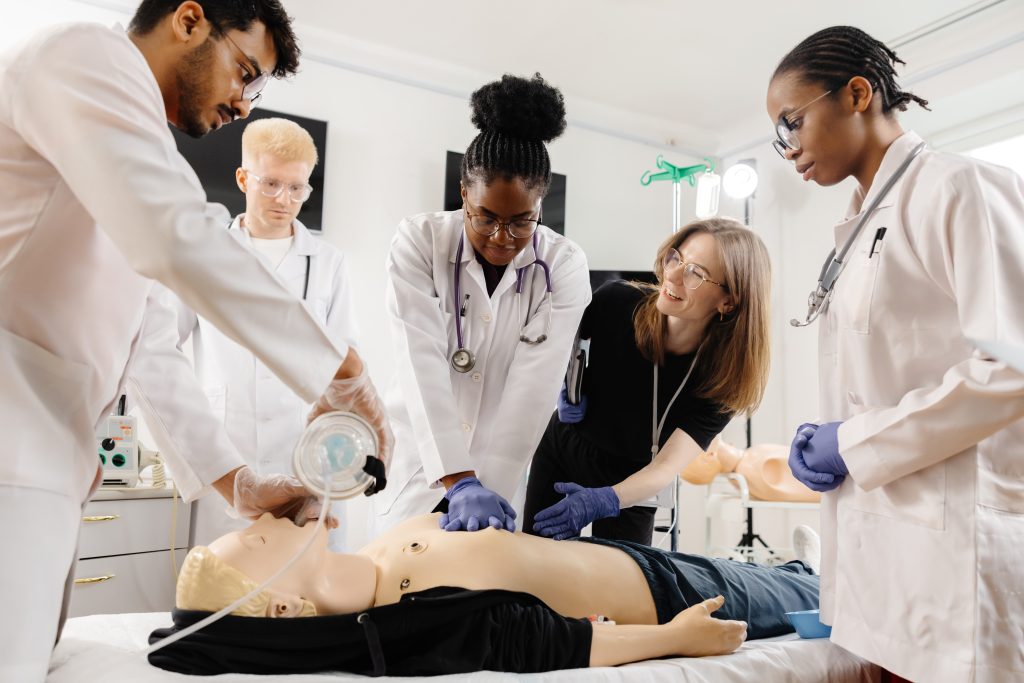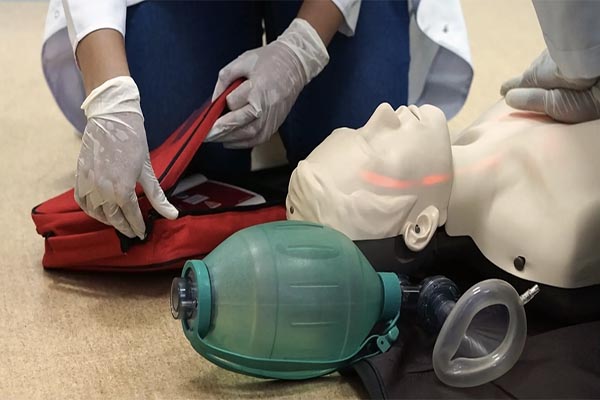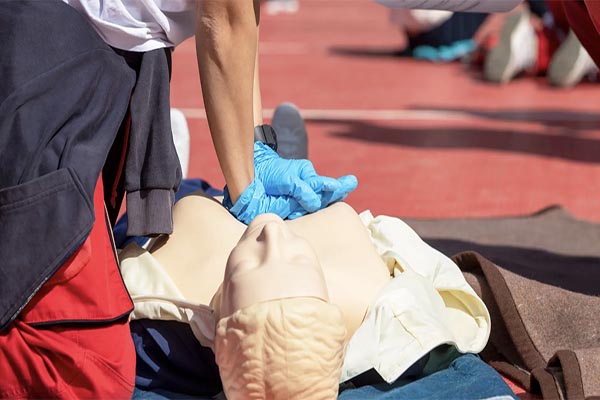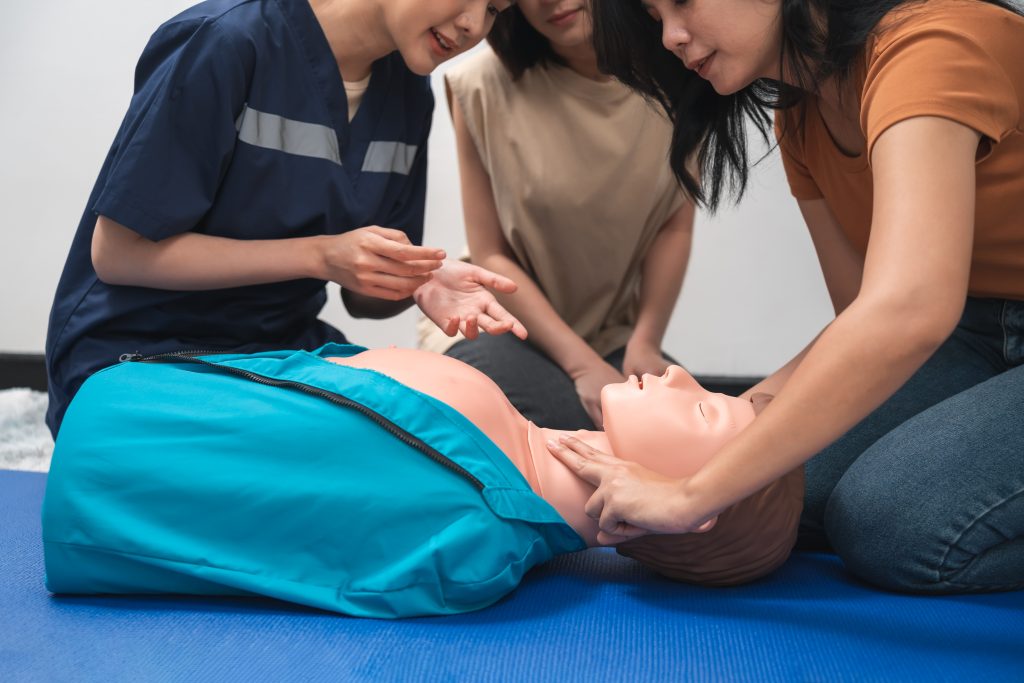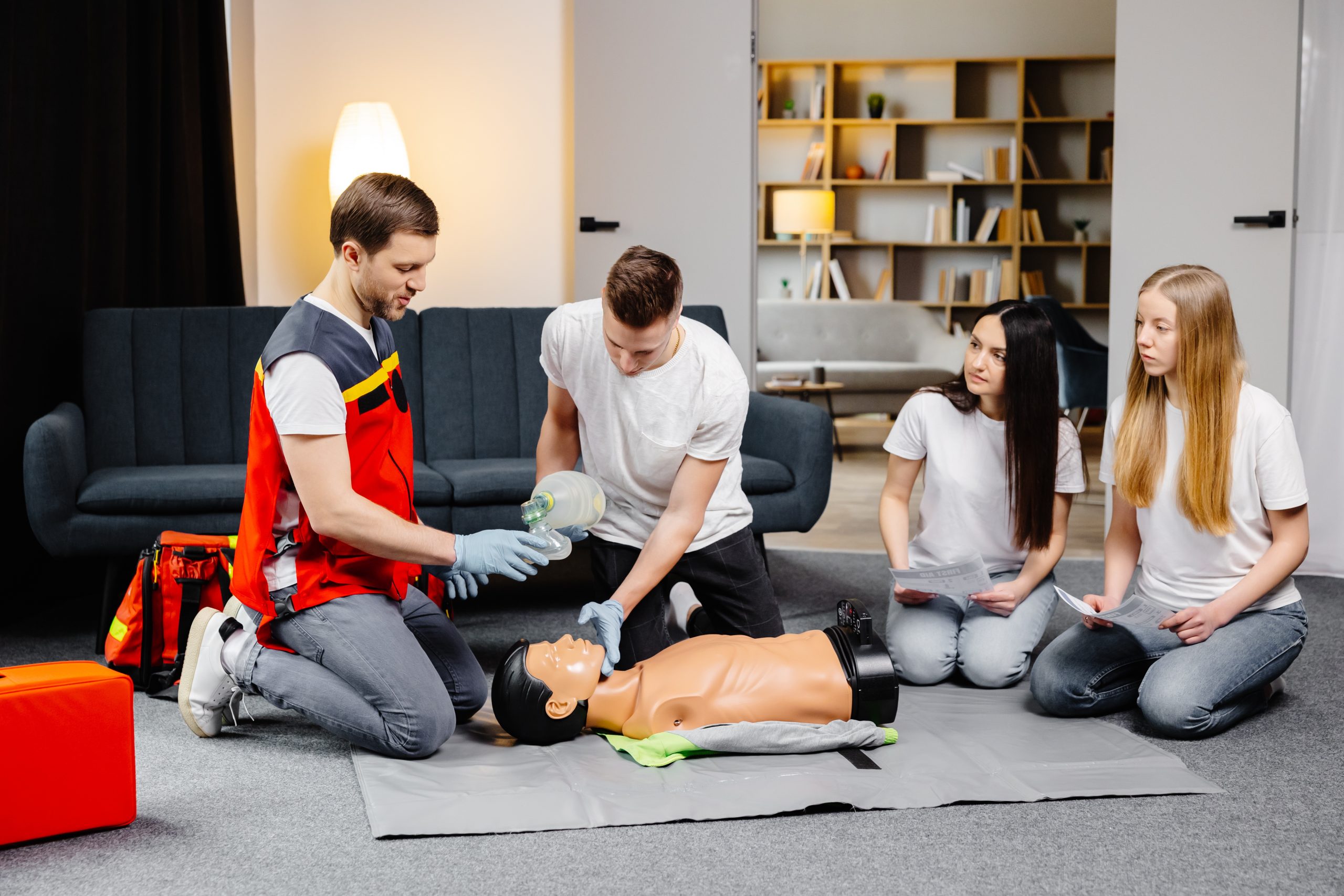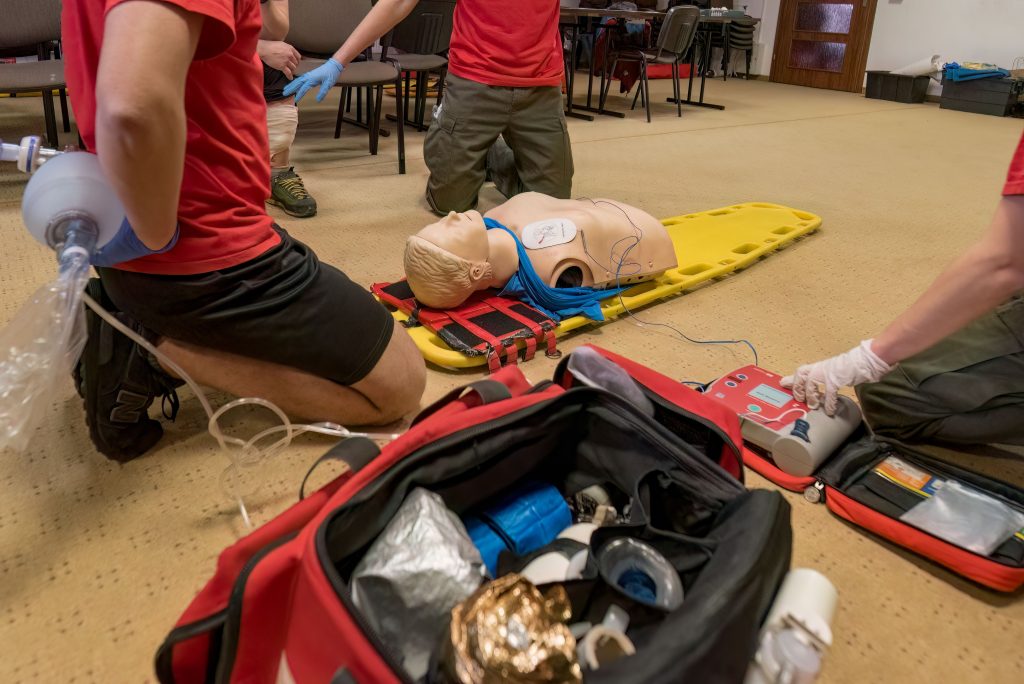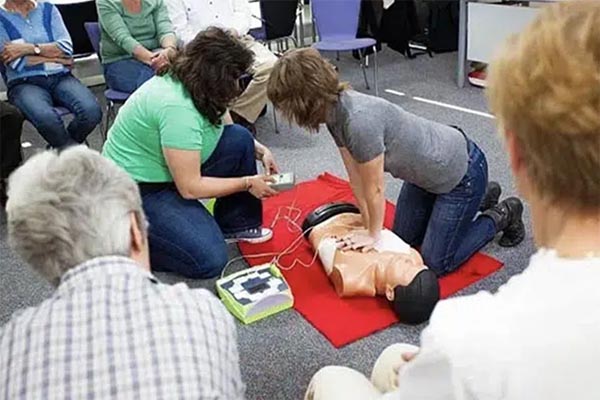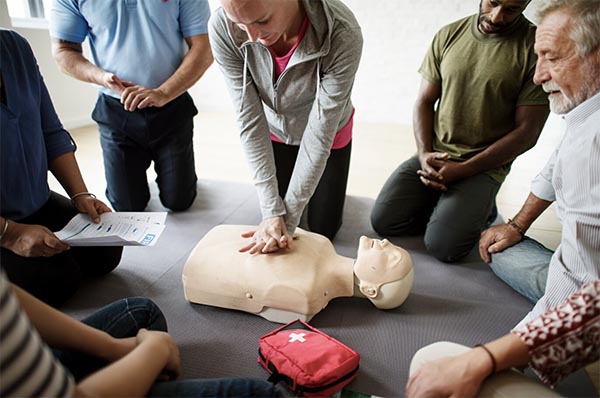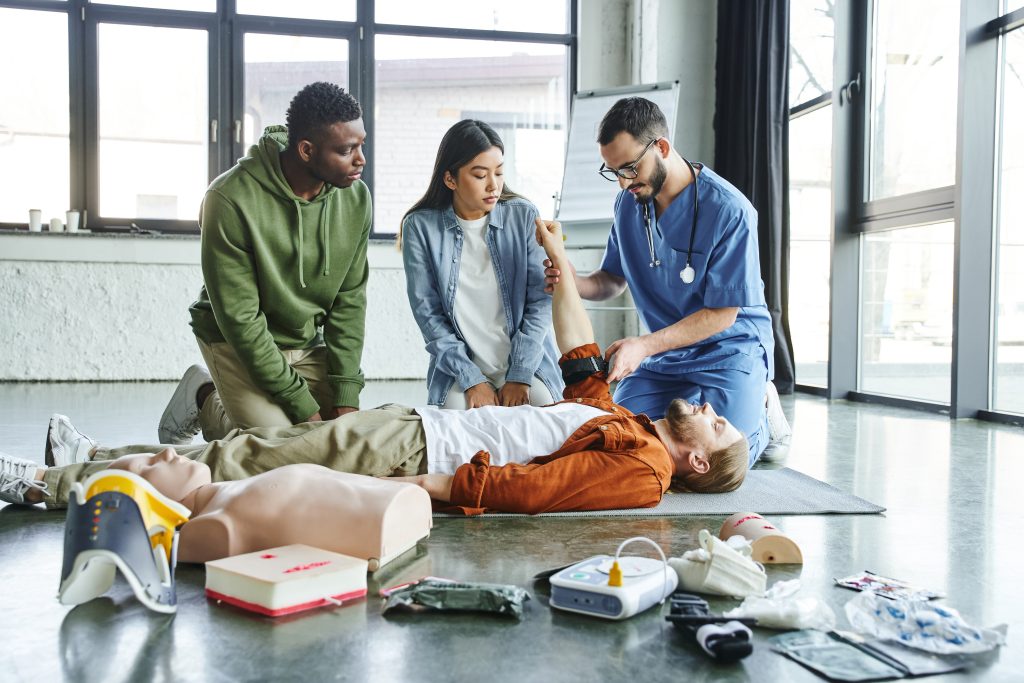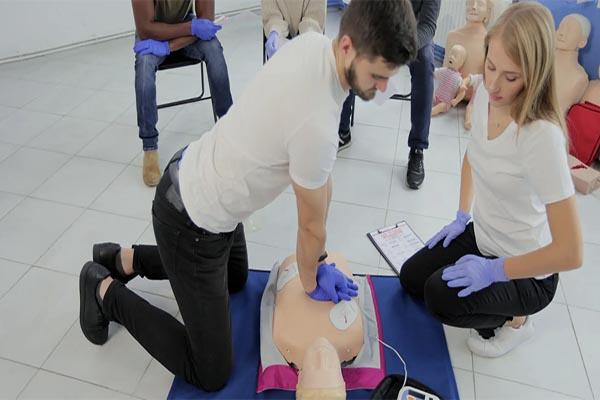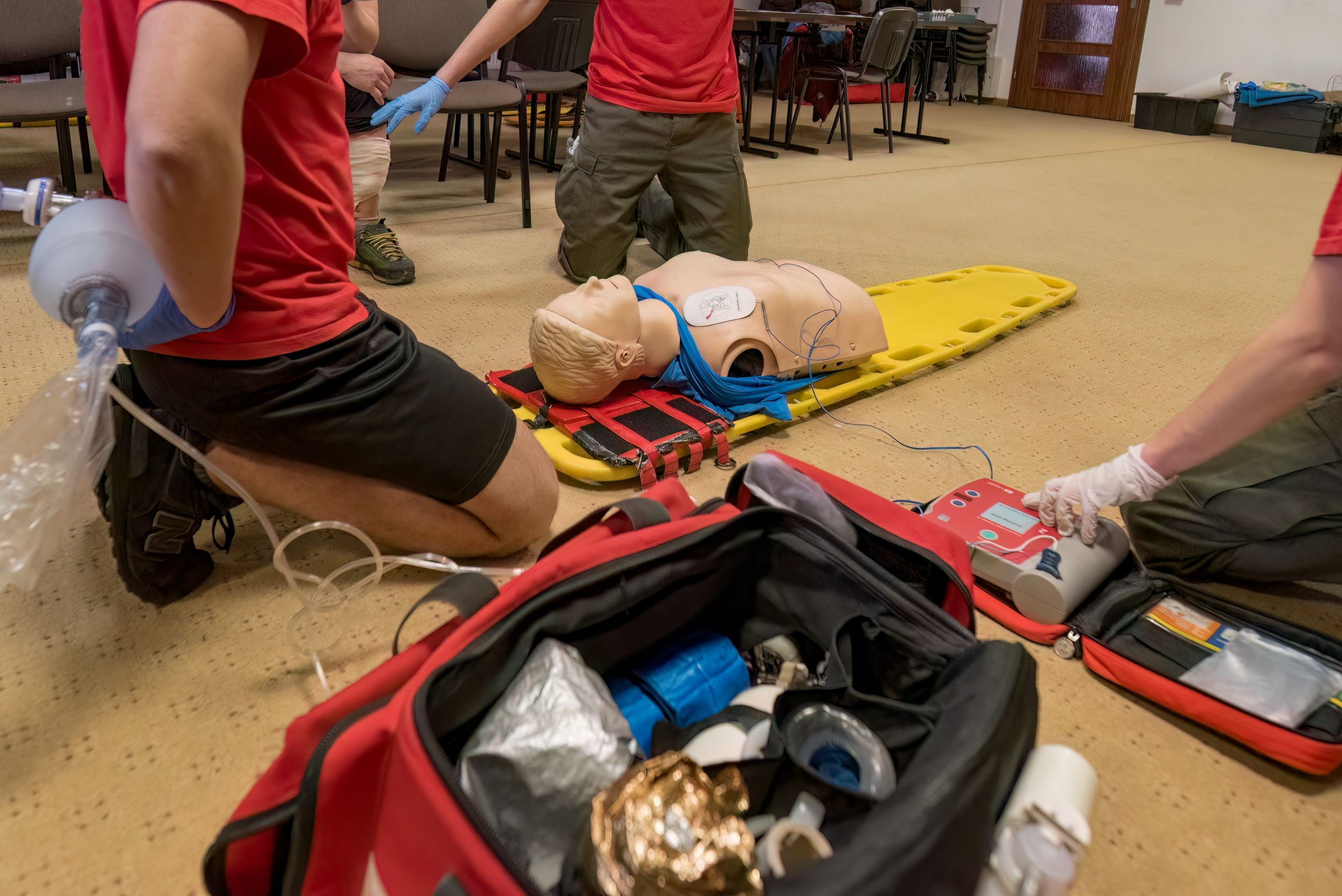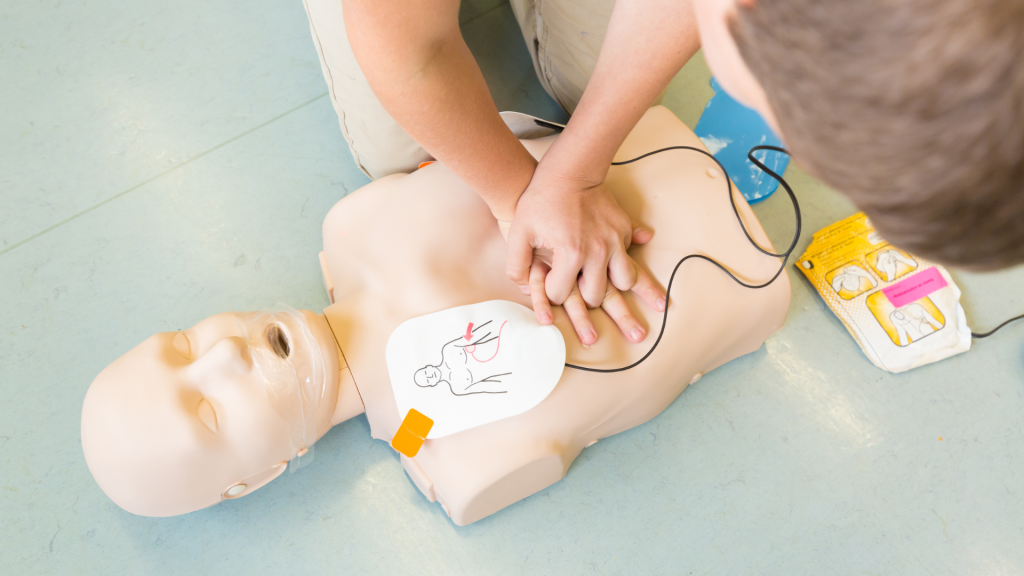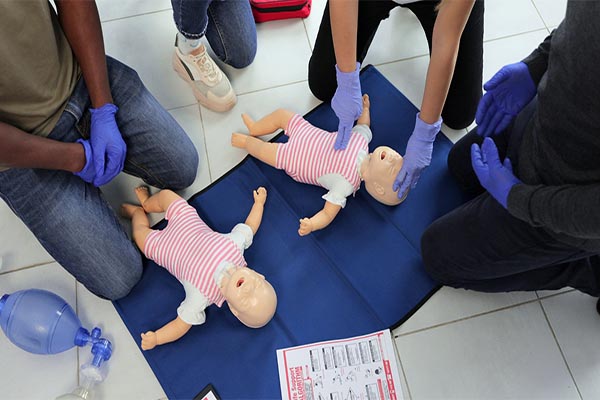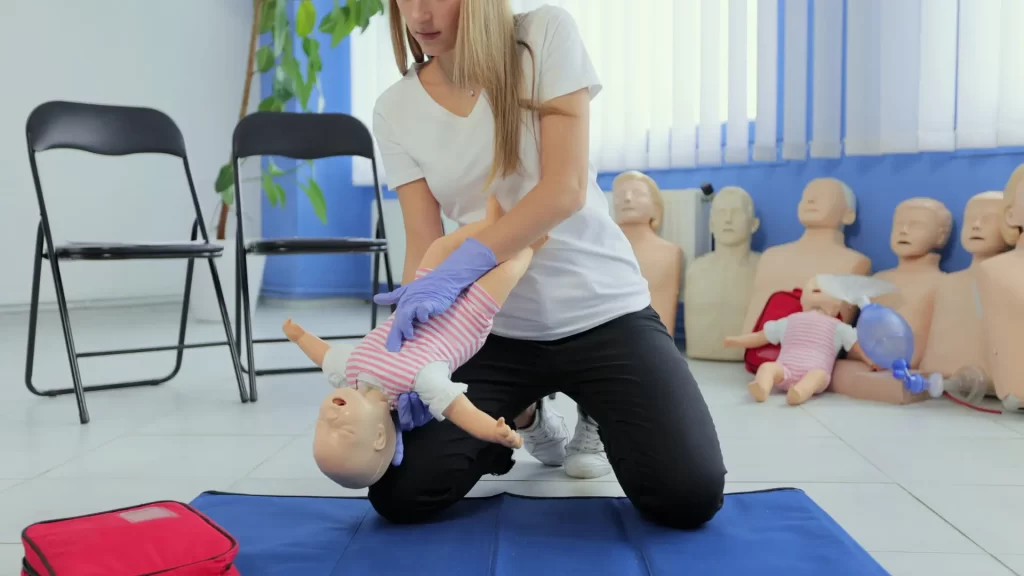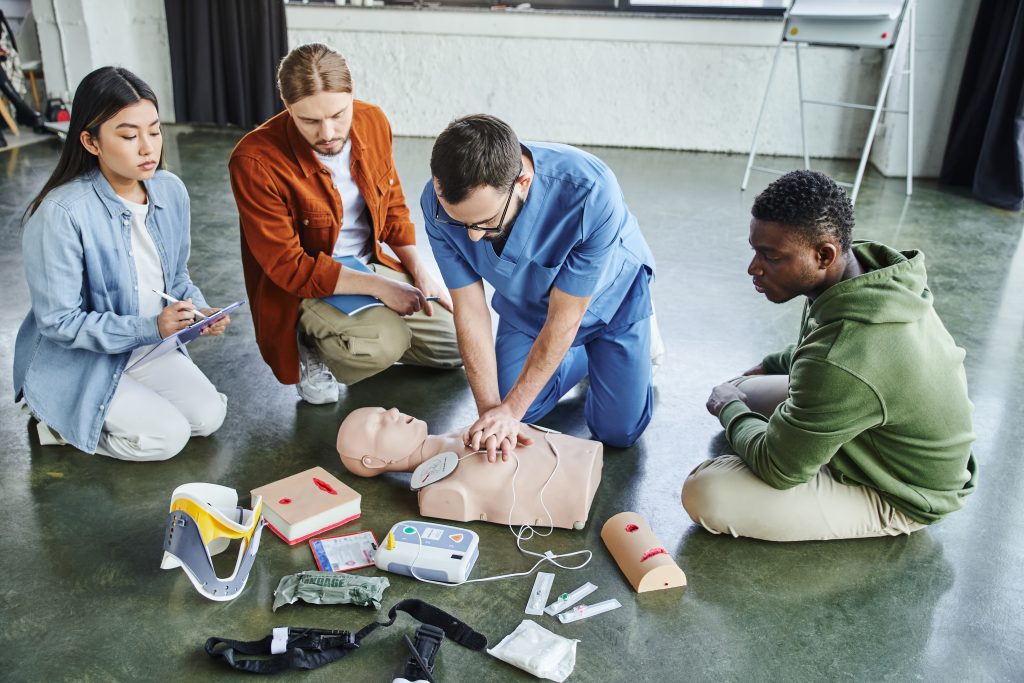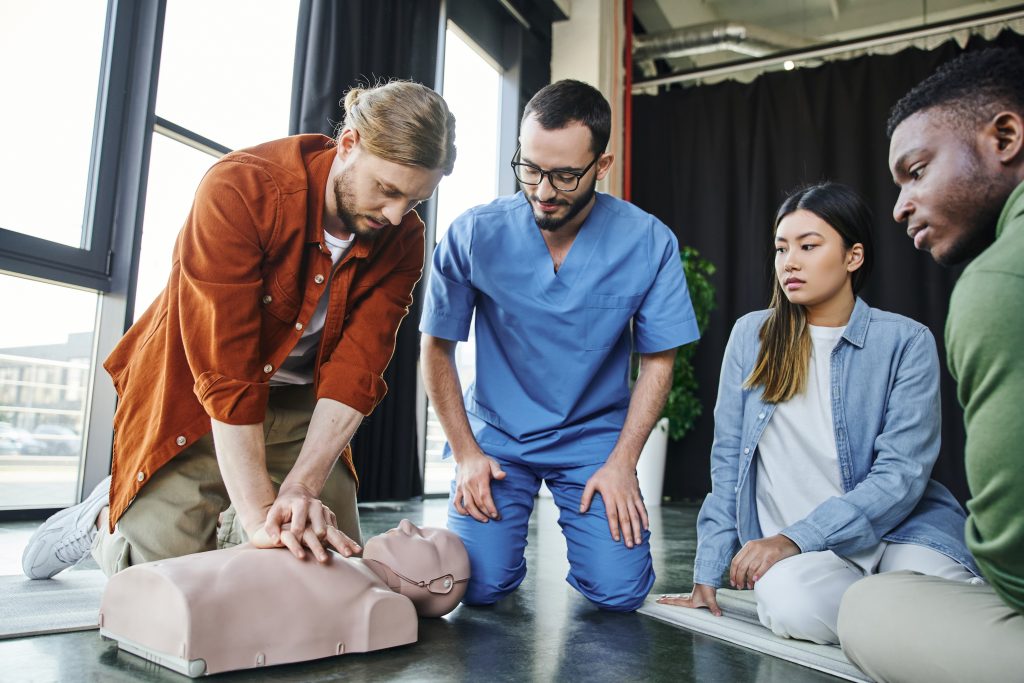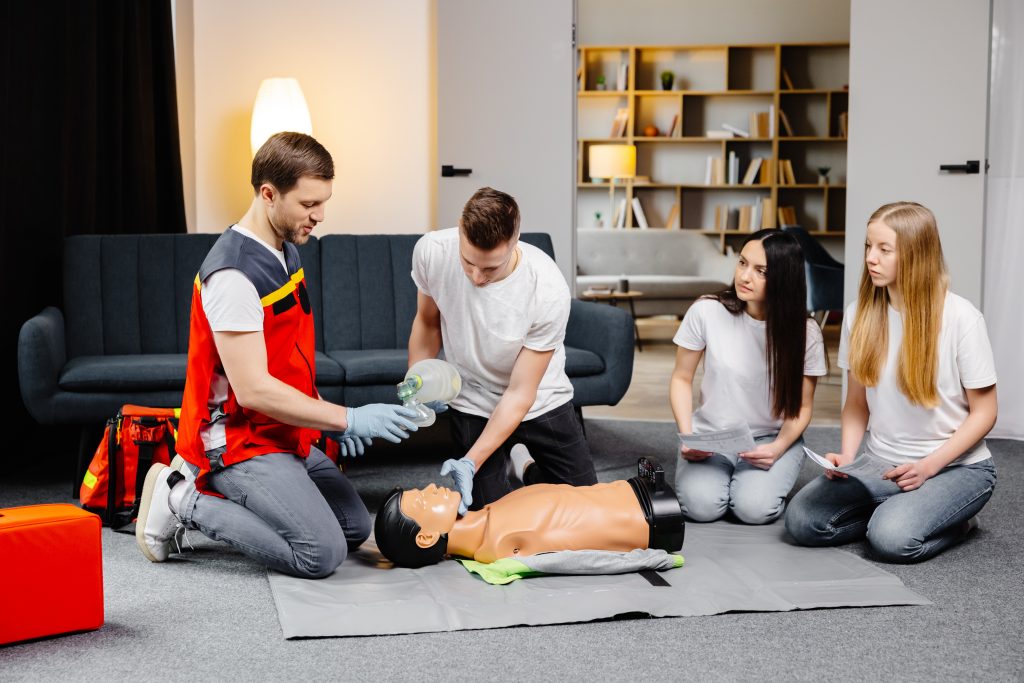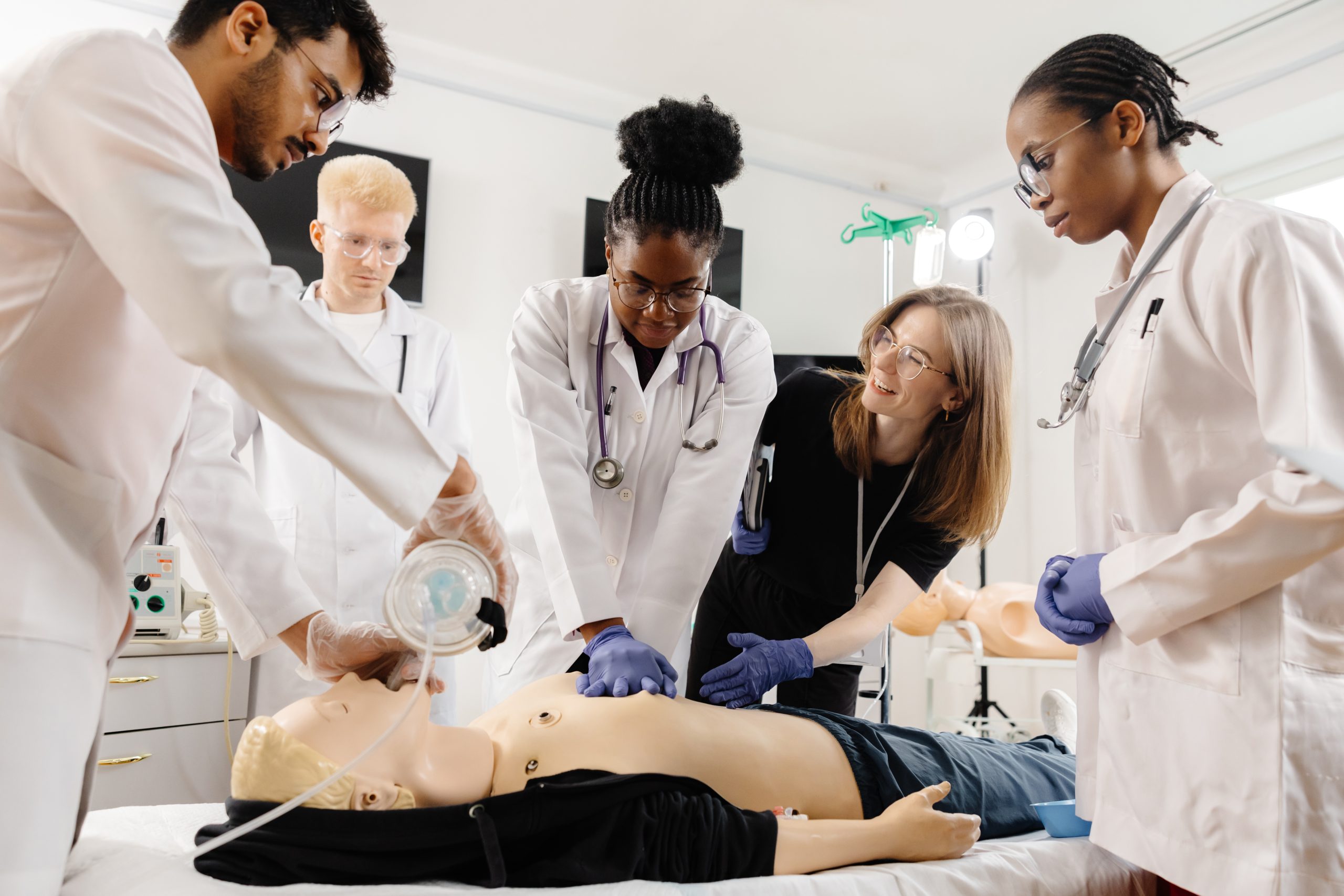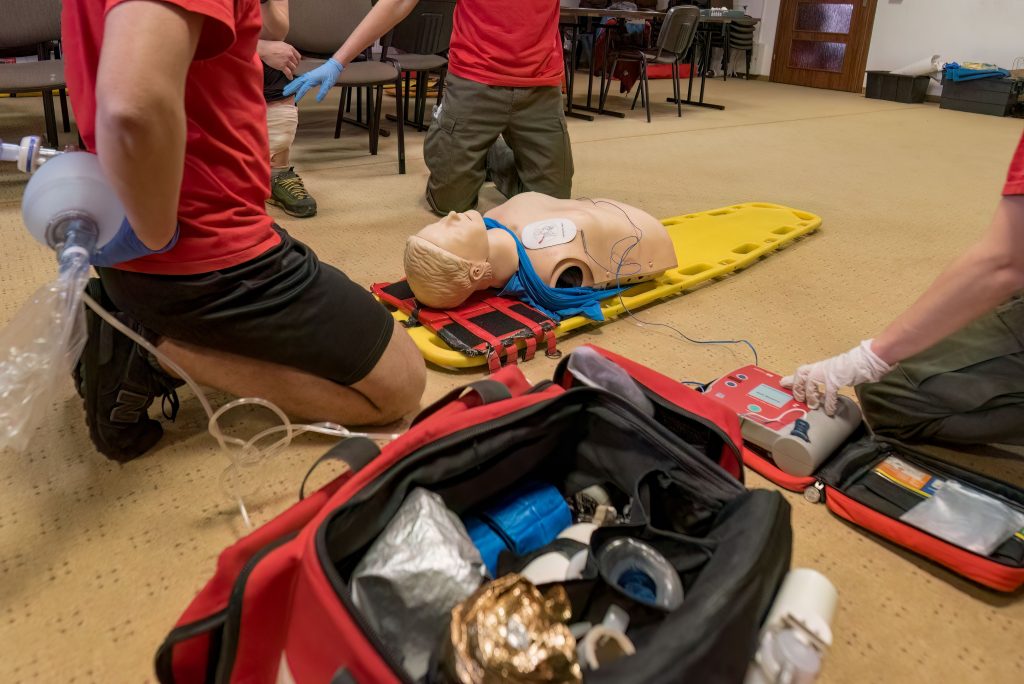How to Perform Hands-Only CPR: A Quick Guide for Lay Rescuers in Raleigh
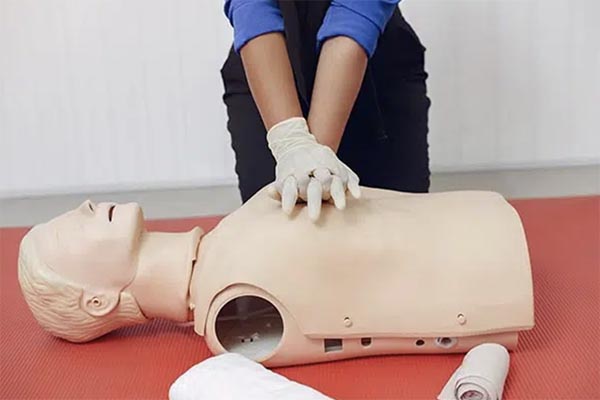
Imagine being at the State Farmers Market, enjoying a beautiful Raleigh afternoon, when suddenly someone near you collapses. Your heart pounds. Do you know what to do in those crucial first few minutes?
In emergency medicine, those precious moments immediately following a sudden cardiac arrest (SCA) are often referred to as the “Golden Hour.” But the first three to five minutes are arguably the most critical. This is where the simple yet powerful technique of Hands-Only Cardiopulmonary Resuscitation (CPR) comes into play.
Hands-Only CPR is a lifesaving measure designed specifically for lay rescuers—the everyday people, who witness an adult or teen suddenly collapse outside of a hospital setting. It focuses solely on chest compressions, eliminating the hesitation many feel about giving rescue breaths. This streamlined approach encourages immediate action.
For residents and visitors in Raleigh, North Carolina, understanding this two-step process isn’t just helpful; it is a vital step in transforming our community into a chain of survival. Every year, thousands of lives are lost to SCA, but the immediate intervention of a bystander can double or even triple a victim’s chance of survival.
This guide will walk you through the precise steps of performing Hands-Only CPR, explain the science behind its effectiveness, and encourage you to take the next step by pursuing full, certified training right here in the heart of the Triangle. By arming yourself with this knowledge, you become a powerful link in Raleigh’s life-saving chain.
What Exactly is Hands-Only CPR and How Does it Differ from Traditional CPR?
Hands-Only CPR is an emergency cardiac intervention that simplifies the standard CPR process into two easily remembered steps. It involves continuous, rapid chest compressions without pausing to administer mouth-to-mouth rescue breaths.
This revolutionary technique emerged from years of research into bystander hesitations and cardiac arrest physiology. Experts realized that the biggest barrier to bystanders intervening was the fear or reluctance associated with giving mouth-to-mouth resuscitation. The American Heart Association (AHA) formalized Hands-Only CPR as the preferred method for the untrained lay rescuer who witnesses an adult or adolescent collapse suddenly.
How is Hands-Only Different?
Hands-Only CPR and traditional CPR (the type taught in a full certification class) have distinct roles.
Traditional CPR, often called Basic Life Support (BLS), involves a sequence of 30 chest compressions followed by 2 rescue breaths. This is the optimal method for certified, trained rescuers and is essential for victims whose cardiac arrest is likely due to a lack of oxygen, such as in cases of drowning or drug overdose.
Hands-Only CPR, however, is simpler. It has just two steps: (1) Call 911 and (2) Push hard and fast in the center of the chest. No rescue breaths are administered.
This simplified approach is specifically targeted at adults and teens who experience a sudden collapse. In these cases, the primary problem is the heart, which has stopped pumping. The victim’s blood still has enough oxygen for the first few minutes, and the most critical need is for someone to mechanically pump that blood to the brain. Hands-Only CPR removes the complexity of rescue breaths, encouraging people with little or no training to start compressions immediately and without delay. This increased speed of intervention is what makes it so effective for the sudden, out-of-hospital cardiac arrest victim.
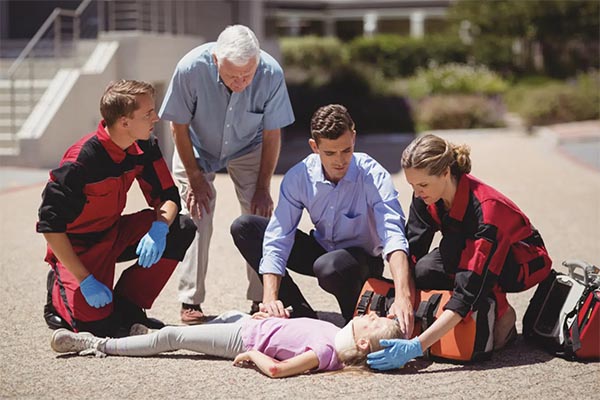
Why is Immediate Bystander CPR So Critical for Survival in Raleigh, NC?
The urgency of starting CPR cannot be overstated, especially in a bustling metropolitan area like Raleigh. Cardiac arrest is a leading cause of death, and the vast majority of these events happen outside of a hospital.
When the heart stops beating effectively, the brain, which is exceptionally sensitive to oxygen deprivation, begins to die. Brain damage can start to occur in as little as four to six minutes without blood flow.
The Time-Sensitive Nature of SCA
- 10% Drop Per Minute: The chance of survival decreases by approximately 10% for every minute that passes without CPR. This severe rate of decline illustrates why time is the most crucial factor.
- Bystander Necessity: In Raleigh and Wake County, Emergency Medical Services (EMS) response times, while highly efficient, still take several minutes. If bystander CPR is not initiated immediately, the victim’s chances of survival plummet long before paramedics arrive on the scene.
- The Bridge to Advanced Care: Hands-Only CPR keeps vital organs supplied with blood, effectively maintaining the victim’s life until an Automated External Defibrillator (AED) can be used or advanced life support professionals take over. Your compressions keep the existing oxygenated blood moving to prevent immediate brain death.
Raleigh’s Community Responsibility
As a vibrant capital city, Raleigh has numerous public spaces, office buildings, and residential areas where an SCA can occur. Empowering the community is the key to improving cardiac arrest outcomes locally.
- Public Witness: Data shows that when SCA is witnessed by a bystander, survival rates are significantly higher, provided that immediate CPR is started.
- Empowerment: Hands-Only CPR is intentionally easy to learn, giving virtually every adult resident in Raleigh the power to intervene confidently without extensive training.
- Localized Impact: By increasing the rate of bystander intervention at places like Research Triangle Park, RDU International Airport, or even neighborhood community centers, Raleigh can markedly improve its overall cardiac arrest survival statistics.
Hands-Only CPR transforms a helpless witness into a life-saver, bridging the gap between collapse and the arrival of professional emergency medical services.
When Should a Lay Rescuer Choose Hands-Only CPR?
Making the decision to start CPR is a high-pressure moment, but the guidelines for lay rescuers are designed to be straightforward. The intervention is specifically tailored to a specific set of circumstances.
The Ideal Scenario for Hands-Only CPR
Hands-Only CPR is the recommended course of action for lay rescuers when they witness two specific criteria:
- Sudden Collapse: The victim is an adult or teen who suddenly collapses. This means you saw the event happen, and it was unexpected.
- Unresponsive and Not Breathing Normally: The victim does not respond when you tap their shoulder and ask, “Are you okay?” and they are not breathing normally. They may be gasping or making no sound at all.
This scenario is typically indicative of a primary cardiac problem, where oxygen is already available in the blood, and the body merely needs external circulation. Hands-Only CPR should be used for adults (puberty and older) and adolescents/teens who experience this type of sudden collapse.
When Should Full CPR (With Breaths) Be Considered?
While Hands-Only CPR is widely applicable, it is not appropriate for all types of emergencies. Full CPR (compressions and rescue breaths) is required in cases where the cause of the arrest is likely due to a lack of oxygen. If you are a trained rescuer (or have taken a full course), you should apply the 30 compressions to 2 breaths sequence.
A lay rescuer should recognize that victims in the following categories have a greater need for rescue breaths:
- Infants or Children: These victims typically suffer from respiratory arrest (choking, severe asthma, etc.), not primary cardiac arrest. They urgently need oxygen from rescue breaths.
- Drowning Victims: Water in the lungs means their bloodstream lacks oxygen.
- Drug Overdose Victims: Respiratory depression from the overdose causes oxygen levels to drop quickly.
- Victims of Prolonged Arrest: If you did not witness the collapse and the person has been down for many minutes before you arrived, their oxygen levels are likely depleted.
Crucial Takeaway: If you are unsure and have no formal training, do not hesitate. Begin Hands-Only CPR immediately on any adult who collapses. Doing something is infinitely better than doing nothing at all.
What Are the Two Simple Steps of Hands-Only CPR for Adults and Teens?
The effectiveness of Hands-Only CPR lies in its simplicity. When facing an emergency, knowing these two steps by heart can make the difference between life and death.
Step 1: Call 9-1-1 (Activate the Emergency Response System)
Your first and most critical action is to secure professional help.
- Check the Scene: Ensure the area is safe for you to approach the victim. You cannot help if you become a victim yourself.
- Check Responsiveness: Tap the person’s shoulder and loudly ask, “Are you okay?” Look for signs of normal breathing (a slow, irregular gasp is not normal breathing).
- If Alone: Use your cell phone to call 911 immediately. Put the phone on speaker and follow any instructions the emergency dispatcher gives you. The dispatcher can guide you through the compression process.
- If with Others: Point to a specific, identifiable person and say, “You, call 911 and find an AED. Bring it back here.” This ensures the task is assigned and completed without confusion.
Step 2: Push Hard and Fast in the Center of the Chest
This is the life-sustaining action that buys time until EMS arrives or an AED is utilized.
- Position the Victim: Ensure the victim is lying flat on their back on a hard, firm surface. The floor or ground is necessary to allow for effective compressions.
- Kneel and Position Hands: Kneel beside the victim’s chest. Place the heel of one hand in the very center of the chest, right on the breastbone (sternum), between the nipples. Place the heel of your other hand directly on top of the first hand, interlacing your fingers or keeping them lifted off the chest.
- Lock and Align: Lock your elbows straight. Position your shoulders directly over your hands, using your entire upper body weight—not just your arms—to push.
- Compress Continuously: Push straight down on the chest hard and fast. The goal is to compress the chest a minimum of two inches (approximately 5 cm) but no more than 2.4 inches (6 cm).
- Maintain Rhythm and Recoil: Push at a rate of 100 to 120 compressions per minute. Crucially, allow the chest to fully recoil—spring back to its normal position—after each compression.
- Do Not Stop: Continue compressions without interruption until professional help takes over, the AED is ready to deliver a shock, or the person begins to move or breathe normally.
How Can I Ensure My Compressions Are “Hard and Fast” Enough?
Achieving the correct rate and depth is paramount to performing effective Hands-Only CPR. Compressions that are too shallow or too slow will not generate enough blood pressure to perfuse the brain and heart.
The AHA guidelines are extremely specific about the quality of chest compressions, which is known as High-Quality CPR.
The Science of Rate and Rhythm
The ideal rate is 100 to 120 compressions per minute. This rhythmic pace is maintained to mimic the heart’s natural pumping action. Anything slower than 100 compressions per minute is considered inadequate, and anything faster than 120 compressions per minute can compromise the effectiveness of the compressions.
To help lay rescuers remember this optimal tempo in a stressful situation, the AHA suggests using a familiar song beat:
- The Classic Disco Beat: The iconic song “Stayin’ Alive” by the Bee Gees has a tempo that falls precisely within the 100 to 120 beats per minute range. Using this mental soundtrack ensures you keep the necessary rapid pace.
- Other Options: If disco is not your style, other songs that fit the tempo include “Another One Bites the Dust” (Queen), “Hips Don’t Lie” (Shakira), or “Gimme, Gimme, Gimme” (ABBA).
The key is consistency and speed. Think: Push, Push, Push…
Mastering Depth and Recoil
The depth of compressions is just as important as the rate. Proper compression depth is vital to squeezing the heart between the breastbone and the spine, forcing blood out.
- The Depth Requirement: You must compress the adult chest by at least 2 inches (5 cm), but avoid going deeper than 2.4 inches (6 cm). Shallow compressions don’t circulate enough blood, while overly deep compressions can cause unnecessary injury.
- Using Body Weight: Use your body weight, leaning in with straight arms, to achieve the necessary force. Pushing with only your arm muscles will lead to fatigue quickly and ineffective compressions.
- Full Chest Recoil: This is one of the most commonly missed elements. After every compression, you must completely release the pressure, allowing the chest to fully spring back up. This moment of recoil creates a negative pressure inside the chest cavity, which allows the heart to refill with blood before the next compression pushes it out. Compressions without adequate recoil are ineffective and dangerous because they prevent the heart from refilling.
By focusing on a consistent, fast rhythm and ensuring adequate depth and full recoil, you maximize the efficiency of the blood flow you are generating. Remember, it is a demanding physical task, but the life you save is priceless.
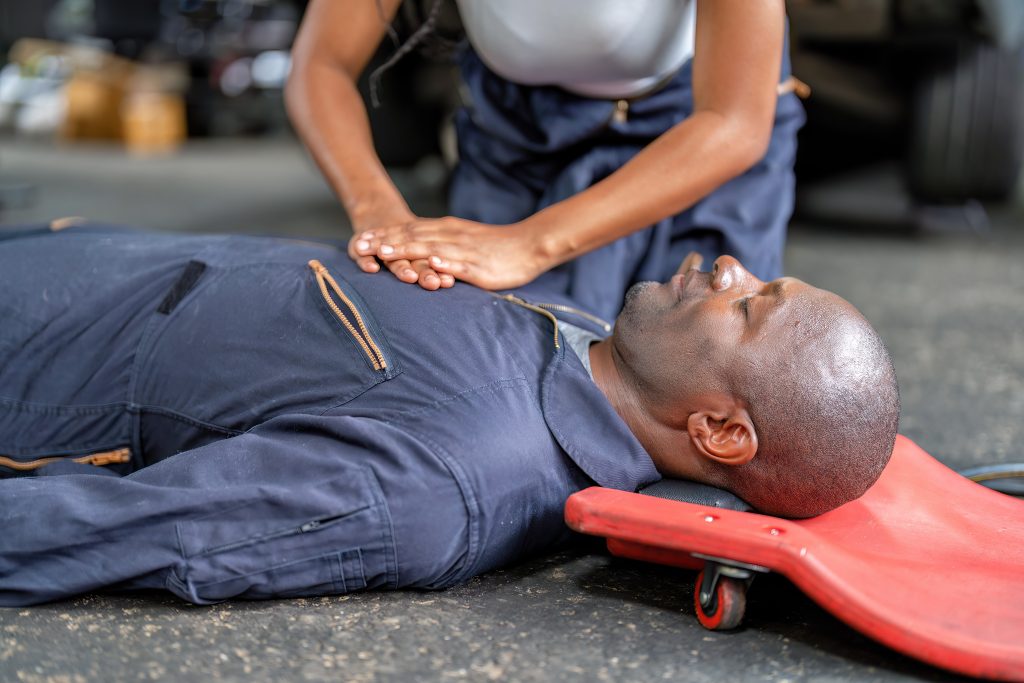
How Do Good Samaritan Laws Protect Lay Rescuers Who Intervene?
One of the most significant barriers preventing bystanders in Raleigh from intervening is the fear of legal repercussions or causing harm. This is where Good Samaritan Laws provide crucial protection.
These laws are designed to encourage lay individuals to assist others in an emergency without fear of being sued for negligence. The intent is clear: to prioritize the saving of a life over concerns about minor, unintended injury that might occur during the life-saving process.
The Purpose and Scope of North Carolina’s Law
In North Carolina, the Good Samaritan Law generally shields a person from civil liability if they voluntarily and gratuitously render first aid or emergency treatment to an injured person. You are protected when acting as a volunteer.
The law recognizes that in an emergency, people will act quickly based on their training and best judgment, even if they aren’t medical professionals.
Key Protections and Provisions
While specific legal advice must be obtained from a licensed attorney, North Carolina’s statutes generally provide protection under the following conditions:
- Acting in Good Faith: The rescuer must be acting with genuine intent to help the victim, not with malicious intent.
- No Expectation of Payment: The aid must be rendered without the expectation of compensation. Hands-Only CPR performed by a bystander fits this criterion perfectly.
- Reasonable Care: The rescuer is protected unless their actions constitute gross negligence or willful or wanton misconduct. Performing AHA-recommended Hands-Only CPR steps (Call 911, Push hard and fast) is considered a reasonable, standard action.
- Using an AED: North Carolina also has specific statutes encouraging the use of AEDs by laypersons, granting immunity to those who use a publicly available defibrillator to save a life.
The Confidence Booster: Knowing that the state of North Carolina supports your decision to intervene should eliminate the fear of liability. When faced with an unresponsive adult, the single riskiest action is doing nothing at all. The potential for saving a life far outweighs the minimal, protected legal risk of intervention.
Where Can Raleigh Residents Get Certified Training to Deepen Their Skills?
While this guide provides the essential knowledge to perform Hands-Only CPR, there is no substitute for formal, hands-on certification training. Hands-Only CPR is a bridge, but full CPR/BLS training equips you with the complete skill set to handle any emergency.
The Value of Full Certification
Certified courses teach more than just compressions; they provide a comprehensive understanding of the entire chain of survival. This higher level of training is often required for jobs in healthcare, childcare, education, and fitness.
In a formal course, you will learn the following critical skills that go beyond Hands-Only CPR:
- Rescue Breaths: This is the skill for treating children, infants, and victims of respiratory arrest (like drowning). You’ll learn the proper head-tilt, chin-lift maneuver.
- AED Operation: How to correctly and confidently use an Automated External Defibrillator, which delivers the electrical shock necessary to restart the heart. The class teaches you to connect the pads and follow the device’s prompts.
- Choking Relief: Techniques for clearing blocked airways in adults, children, and infants, a vital skill that is not part of Hands-Only CPR.
- Team Dynamics: If you are pursuing a Basic Life Support (BLS) certification, you learn how to work effectively with other rescuers, a critical skill for healthcare professionals and the public alike.
Choose AHA-Certified Training in Raleigh
When you decide to take the next step in Raleigh, it is essential to choose a provider that offers the gold standard in emergency training. The American Heart Association (AHA) certification is the most widely recognized and employer-accepted certification nationwide.
CPR Classes Near Me Raleigh is proud to be an American Heart Association Certified Training site, offering leading BLS CPR Certification Classes right here in our community.
What We Offer Locally:
- AHA BLS CPR & AED Certification: Our core course covers adult, child, and infant CPR, proper AED use, and choking relief.
- Hands-On Training: We emphasize hands-on chest compressions and rescue breath training in a fun, relaxed environment. You’ll practice on manikins, gaining muscle memory.
- Same-Day eCards: Upon successful completion of your class, you receive your AHA BLS eCard certification immediately, valid for two years.
- Qualified Local Instructors: Our team consists of certified, local instructors who deliver the finest training experience.
Do not just read about saving a life; learn how to feel the correct rate and depth on a training manikin. Mastering these tactile skills ensures that when an emergency happens, muscle memory takes over, allowing you to act decisively.
Conclusion
The knowledge of Hands-Only CPR is one of the most valuable skills a resident of Raleigh, NC, can possess. It is a powerful, simplified, and immediately actionable response to an adult suffering a sudden cardiac arrest. By remembering the two simple steps, Call 911, and Push Hard and Fast, you are providing the victim with their best chance for survival. Your quick intervention ensures vital oxygenated blood continues flowing to the brain and heart until professional help arrives.
We encourage every person in the Raleigh area to internalize these steps and commit to being a proactive member of the community’s safety net. While Hands-Only CPR provides the baseline emergency response, remember that full, certified training gives you the confidence and competence to handle a broader range of emergencies, including those involving infants, children, and respiratory distress. By getting certified, you transition from being a passive bystander to an active, essential link in the Chain of Survival.
Take the next step toward becoming a truly prepared life-saver.
To secure your American Heart Association BLS CPR Certification, which covers the full scope of CPR, AED use, and first aid principles, contact our local experts today. Contact CPR Classes Near Me Raleigh to book your hands-on training session and save a life tomorrow.
Frequently Asked Questions (FAQ)
Q: Is Hands-Only CPR less effective than CPR that includes rescue breaths?
A: For an adult who experiences a sudden, witnessed cardiac arrest outside of a hospital, Hands-Only CPR has been shown to be just as effective as conventional CPR with breaths during the first few minutes. This is because the victim often still has enough oxygen in their bloodstream for the initial phase of resuscitation. The priority is simply moving that blood. However, for cardiac arrests caused by breathing problems (like drowning or overdose), or for children and infants, conventional CPR (compressions and breaths) remains the optimal choice because the lack of oxygen is the primary issue. Hands-Only CPR is the AHA-recommended intervention for lay rescuers who are untrained or unwilling to give rescue breaths, simplifying the process and encouraging immediate action.
Q: Can I hurt someone by performing chest compressions?
A: While it is possible to cause injury, such as a broken rib or sternum fracture, during chest compressions, this concern should never deter you from attempting CPR. The only alternative to performing CPR on an unresponsive, non-breathing person is death. A fractured rib is a minor injury compared to death or permanent brain damage. Furthermore, North Carolina’s Good Samaritan Laws provide legal protection for lay rescuers acting in good faith to save a life, shielding them from liability for such unintended injuries. The consensus among medical professionals is that any attempt at life-saving CPR is better than doing nothing.
Q: How long should I continue performing Hands-Only CPR?
A: You should continue performing hard and fast chest compressions without interruption until one of three things occurs: 1) Professional help, such as EMS personnel from Raleigh Fire/EMS, arrives and takes over resuscitation efforts. 2) An Automated External Defibrillator (AED) is brought to the scene and is ready to deliver a shock, or you are instructed to pause for the AED to analyze the victim. 3) The victim begins to wake up, move, breathe normally, or show other definitive signs of recovery. Do not stop because you are tired; if another bystander is present, switch rescuers every two minutes to maintain high-quality compressions.
Q: Are there situations where I should avoid performing CPR?
A: Yes, there are a few scenarios. If the scene is unsafe (e.g., traffic, fire, active electrical hazard), your first priority must be your own safety, and you should not approach the victim until the scene is secure. You should also not begin CPR if the person is responsive, breathing normally, or merely sleeping. CPR should only be initiated if the person is unresponsive and not breathing normally. If a victim has a Do Not Resuscitate (DNR) order present and visible, you should honor that request, though lay rescuers typically do not have the time or ability to verify such documentation. When in doubt, call 911 and begin compressions.
Q: Can children and infants receive Hands-Only CPR?
A: Hands-Only CPR is primarily recommended for sudden cardiac arrest in adults and adolescents (teens). Children and infants usually experience cardiac arrest secondary to a respiratory issue (choking, drowning, severe infection). Because they need oxygen immediately, they require conventional CPR that includes rescue breaths (30 compressions to 2 breaths, or 15:2 if two trained rescuers are present). A lay rescuer who witnesses a child collapse and is not trained in full CPR should still call 911 and begin compressions, but taking a full AHA course is highly recommended to learn the necessary rescue breathing techniques for pediatric victims.

